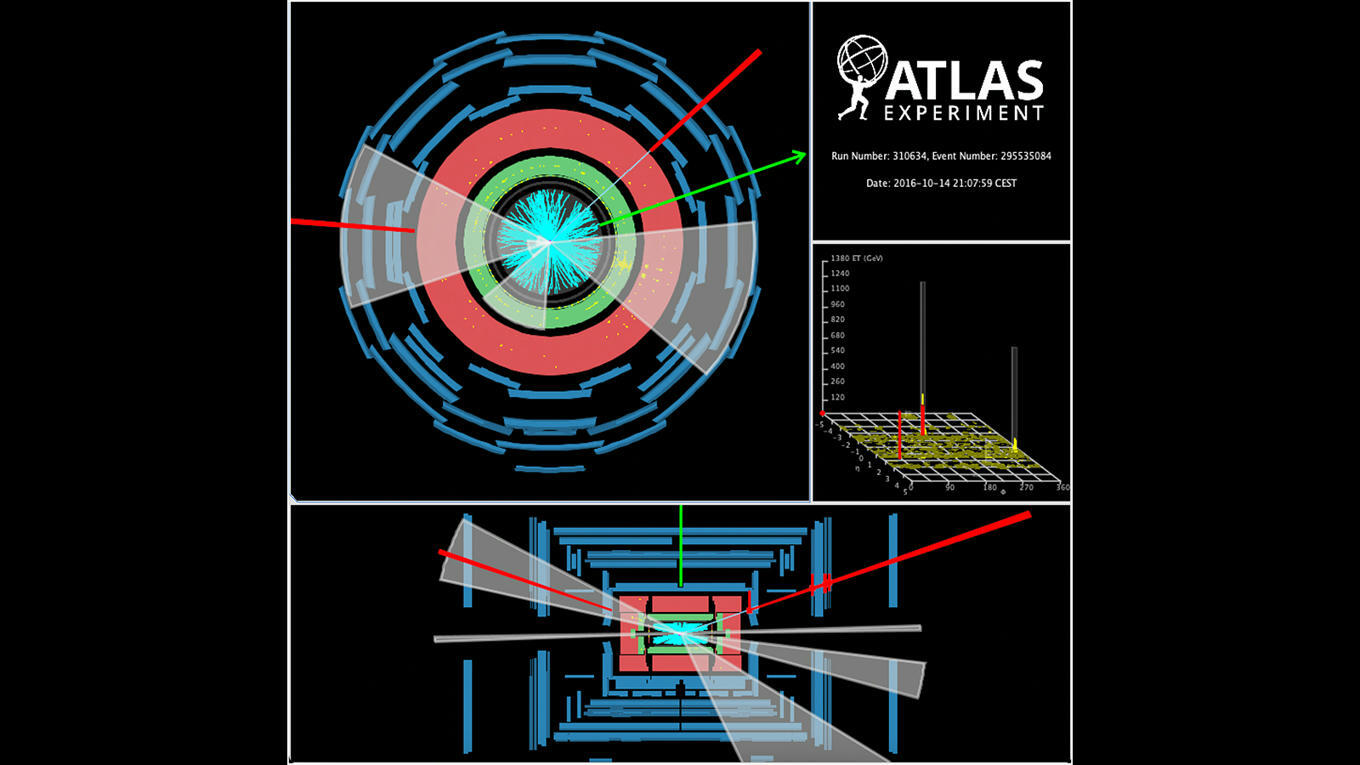
Scientists used a neural network, a type of brain-inspired machine learning algorithm, to sift through large volumes of particle collision data.
For over two decades, the ATLAS particle detector has recorded the highest energy particle collisions in the world within the Large Hadron Collider (LHC) located at CERN, the European Organization for Nuclear Research. Beams of protons are accelerated around the LHC at close to the speed of light, and upon their collision at ATLAS, they produce a cascade of new particles, resulting in over a billion particle interactions per second.
Particle physicists are tasked with mining this massive and growing store of collision data for evidence of undiscovered particles. In particular, they’re searching for particles not included in the Standard Model of particle physics, our current understanding of the universe’s makeup that scientists suspect is incomplete.
As part of the ATLAS collaboration, scientists at the U.S. Department of Energy’s (DOE) Argonne National Laboratory and their colleagues recently used a machine learning approach called anomaly detection to analyze large volumes of ATLAS data. The method has never before been applied to data from a collider experiment. It has the potential to improve the efficiency of the collaboration’s search for something new. The collaboration involves scientists from 172 research organizations.
The team leveraged a brain-inspired type of machine learning algorithm called a neural network to search the data for abnormal features, or anomalies. The technique breaks from more traditional methods of searching for new physics. It is independent of — and therefore unconstrained by — the preconceptions of scientists.
Read the full article at: www.anl.gov